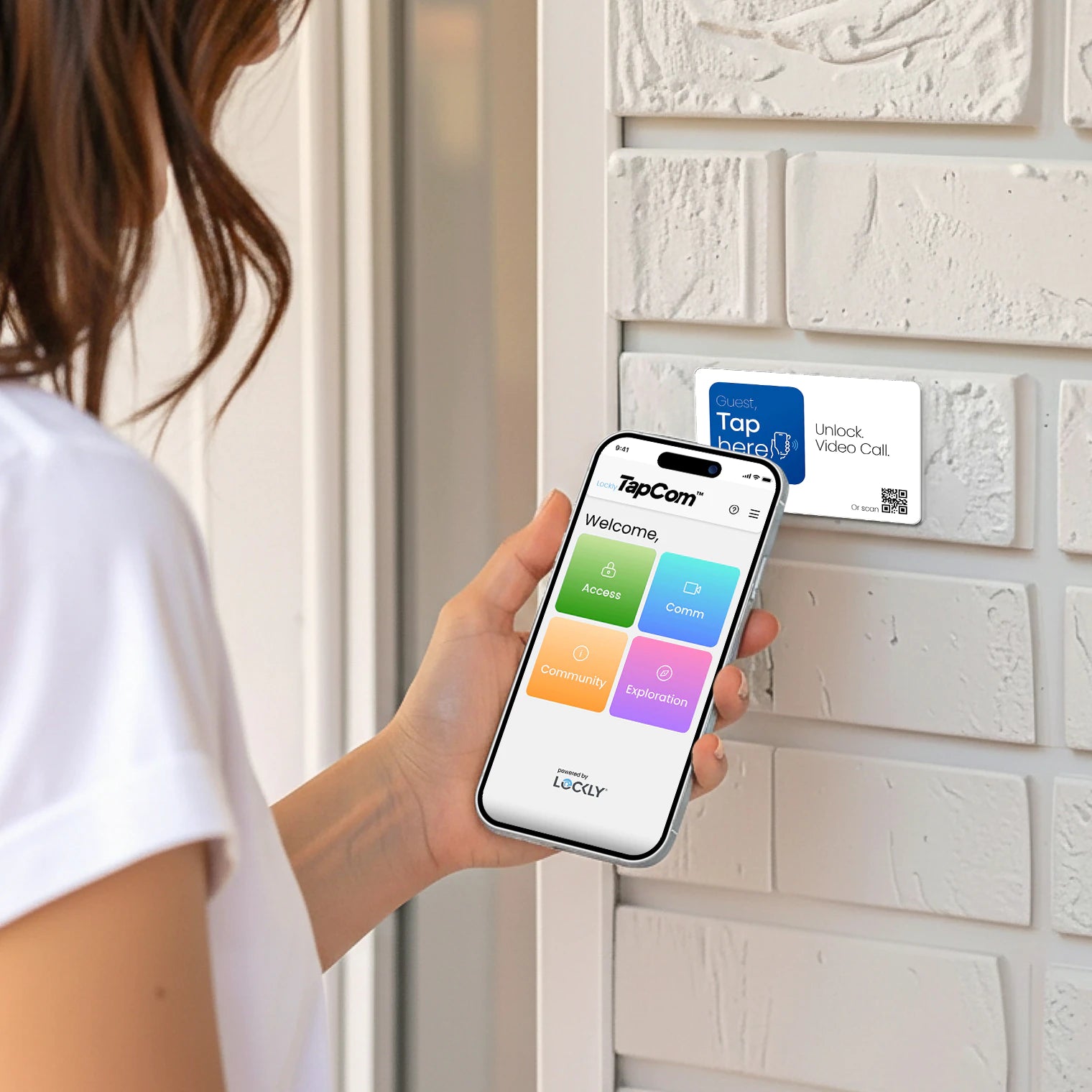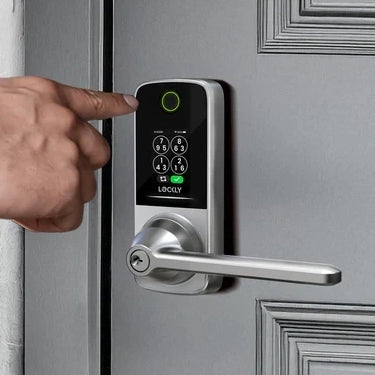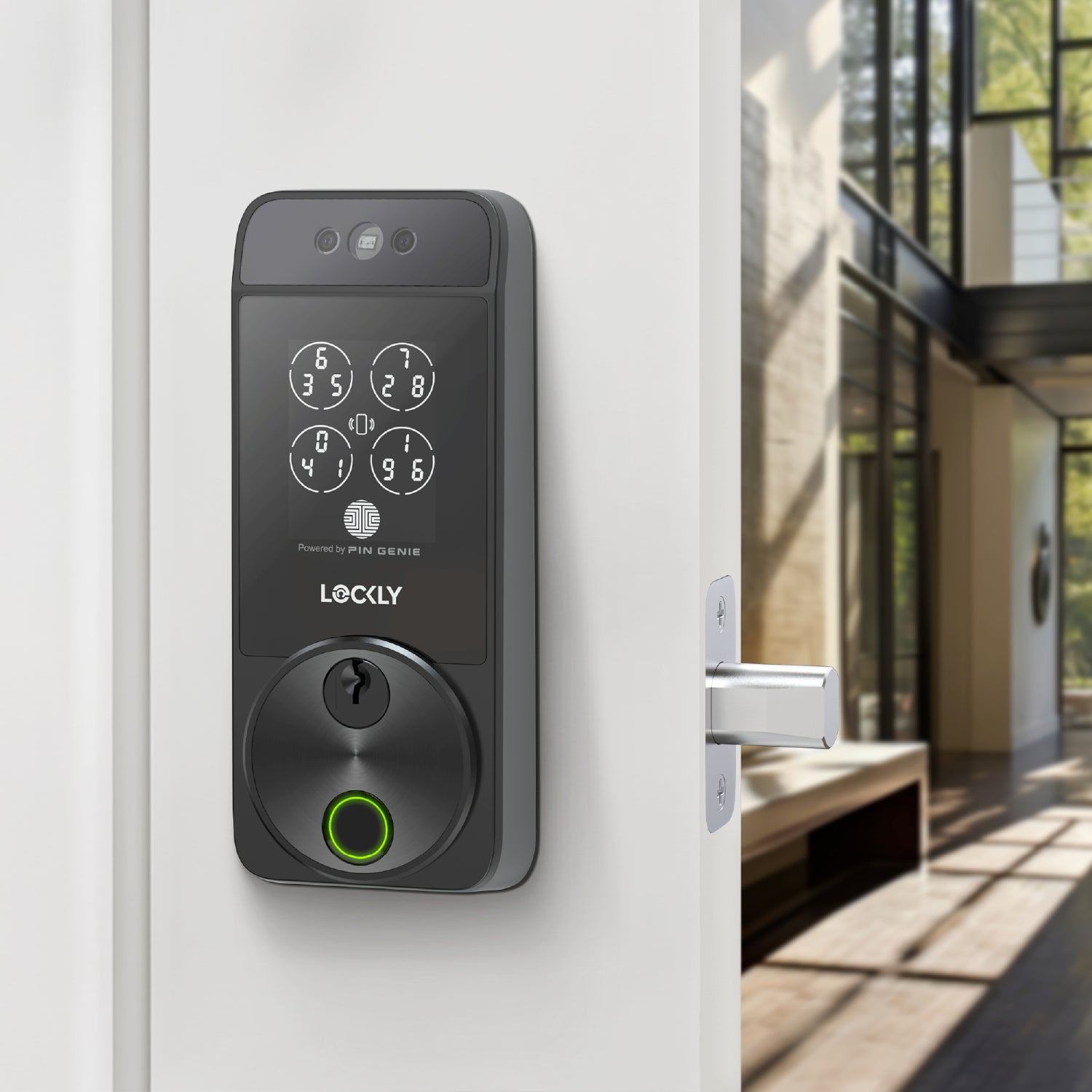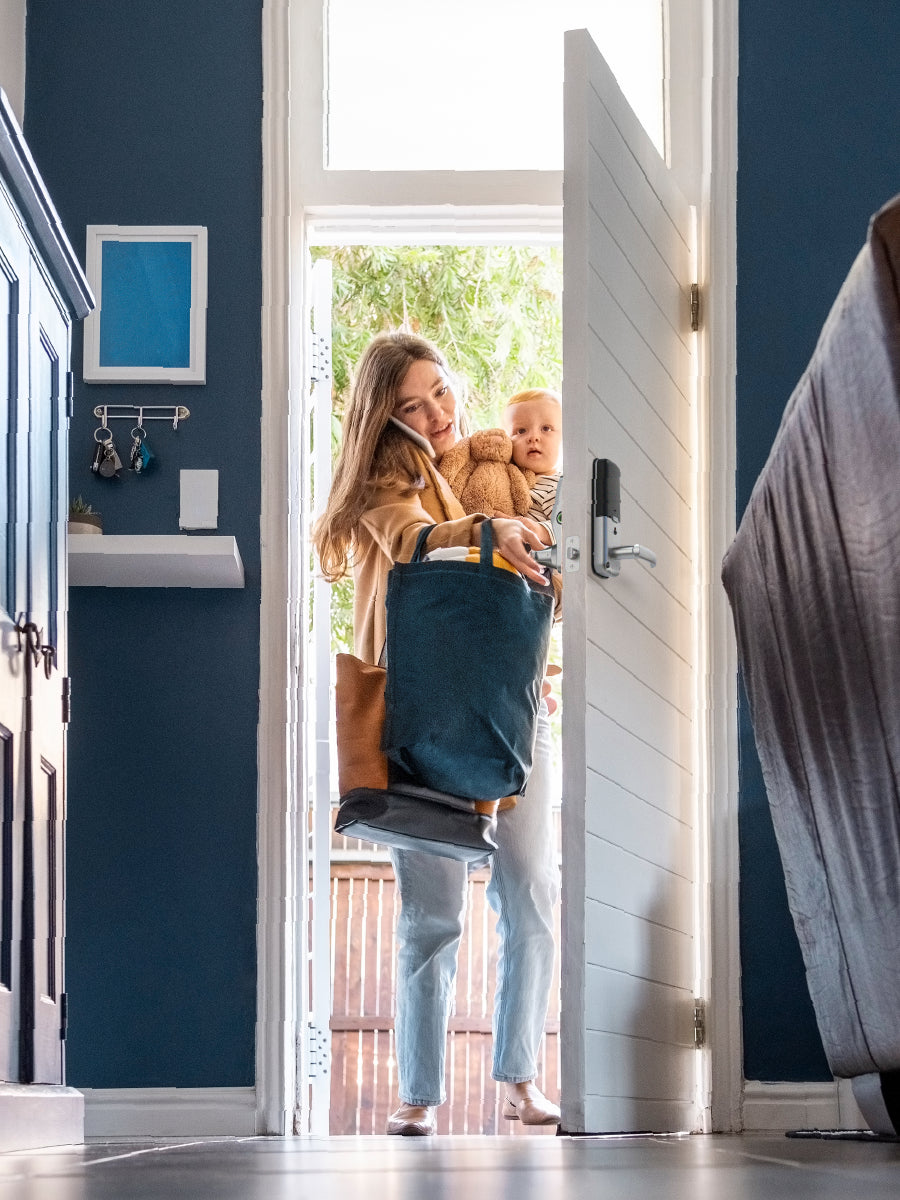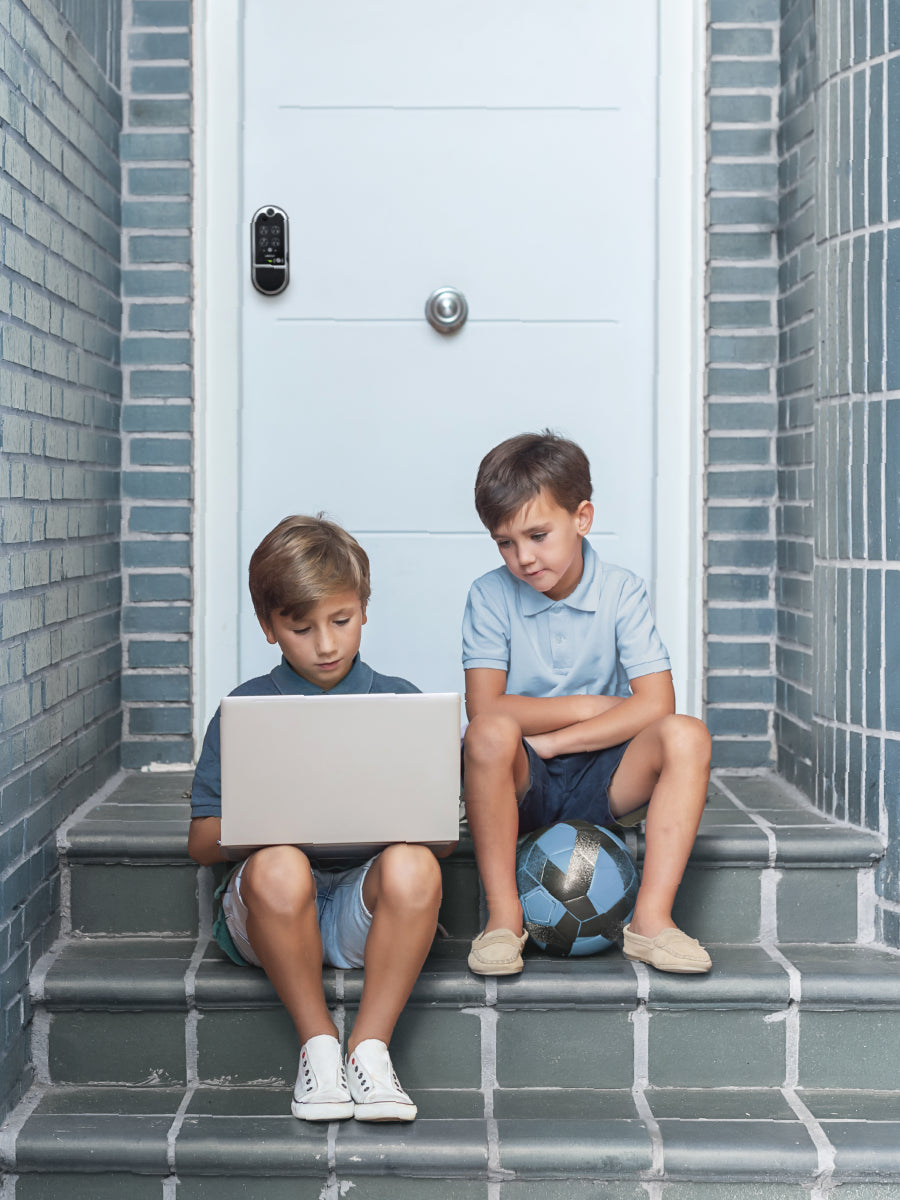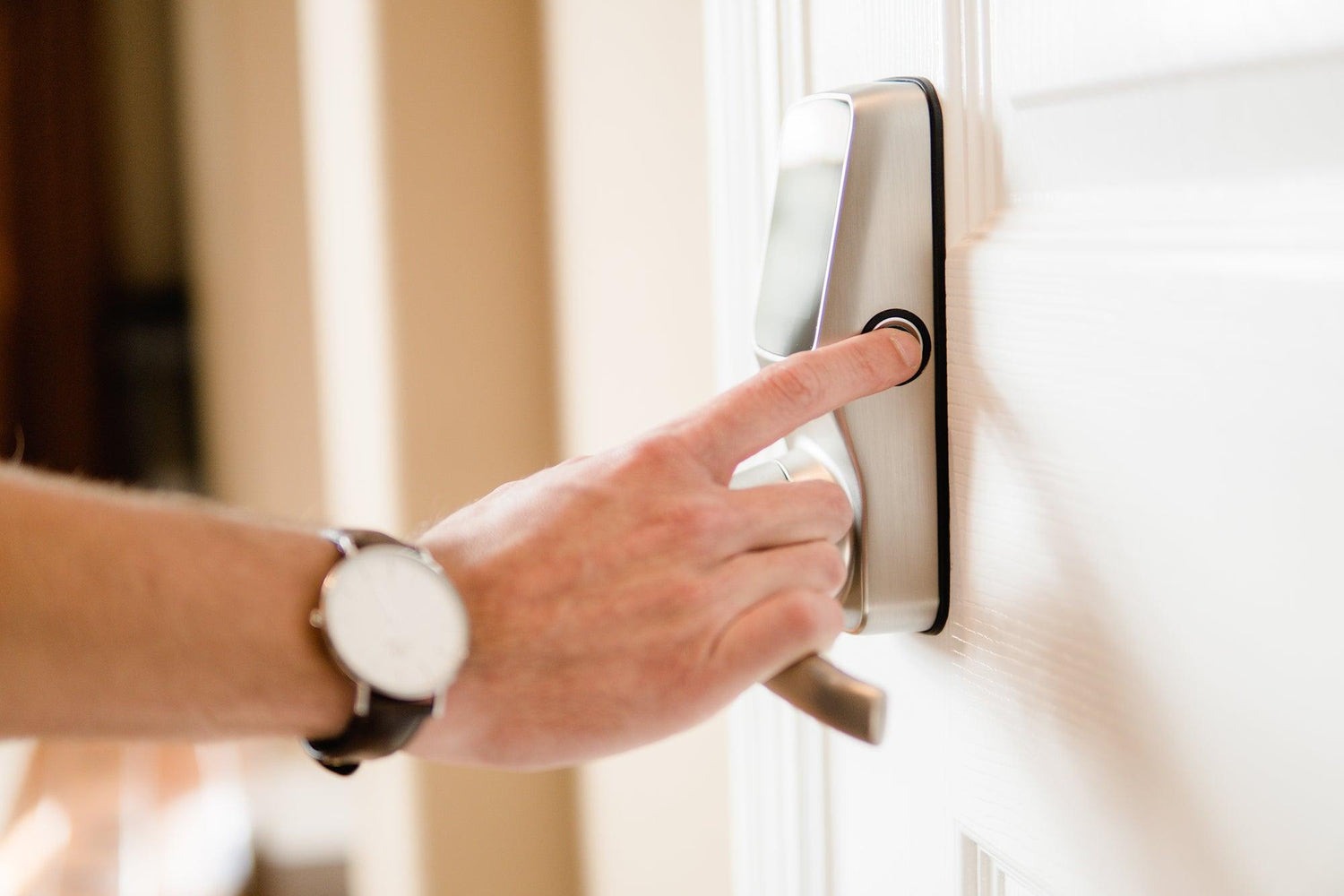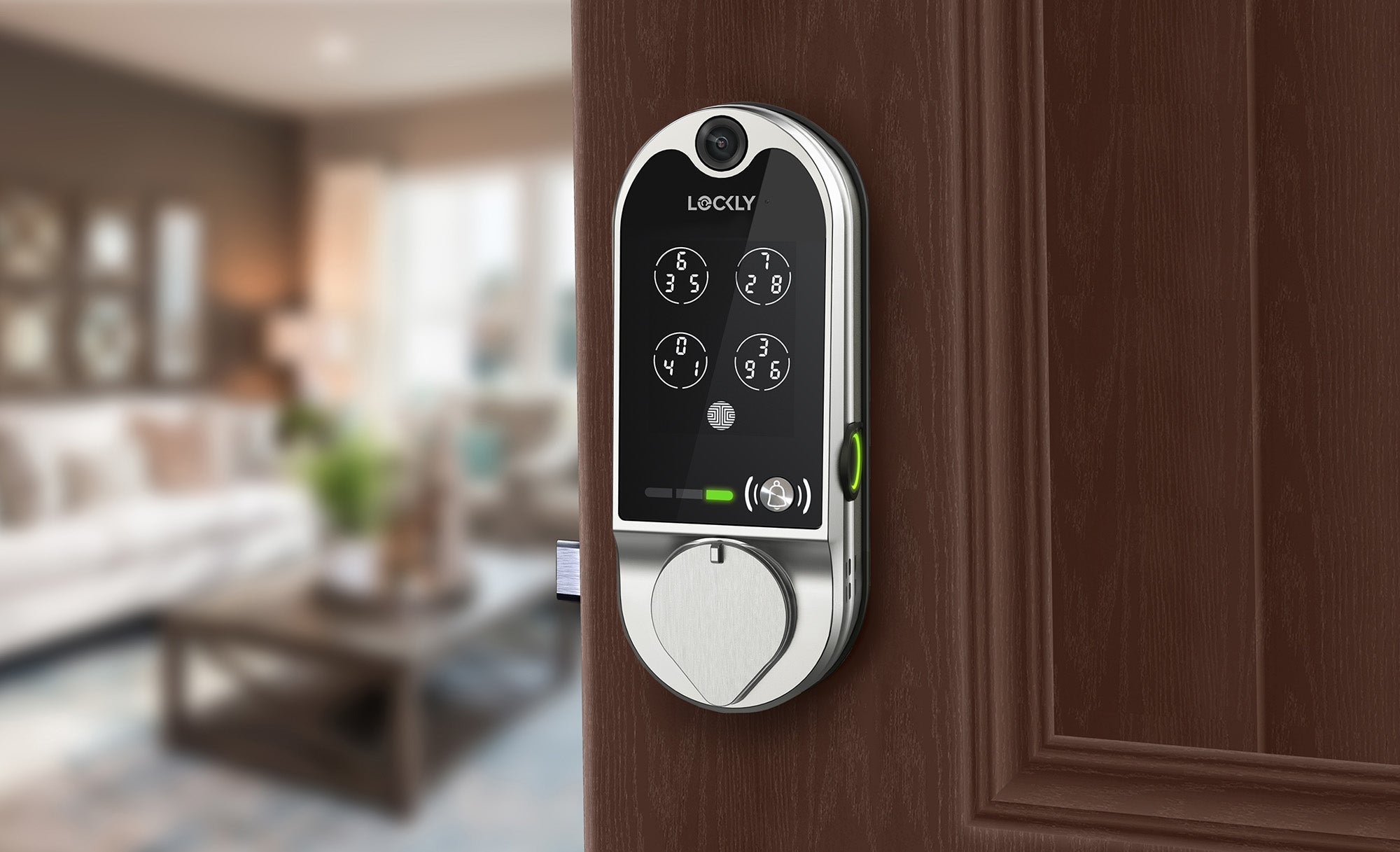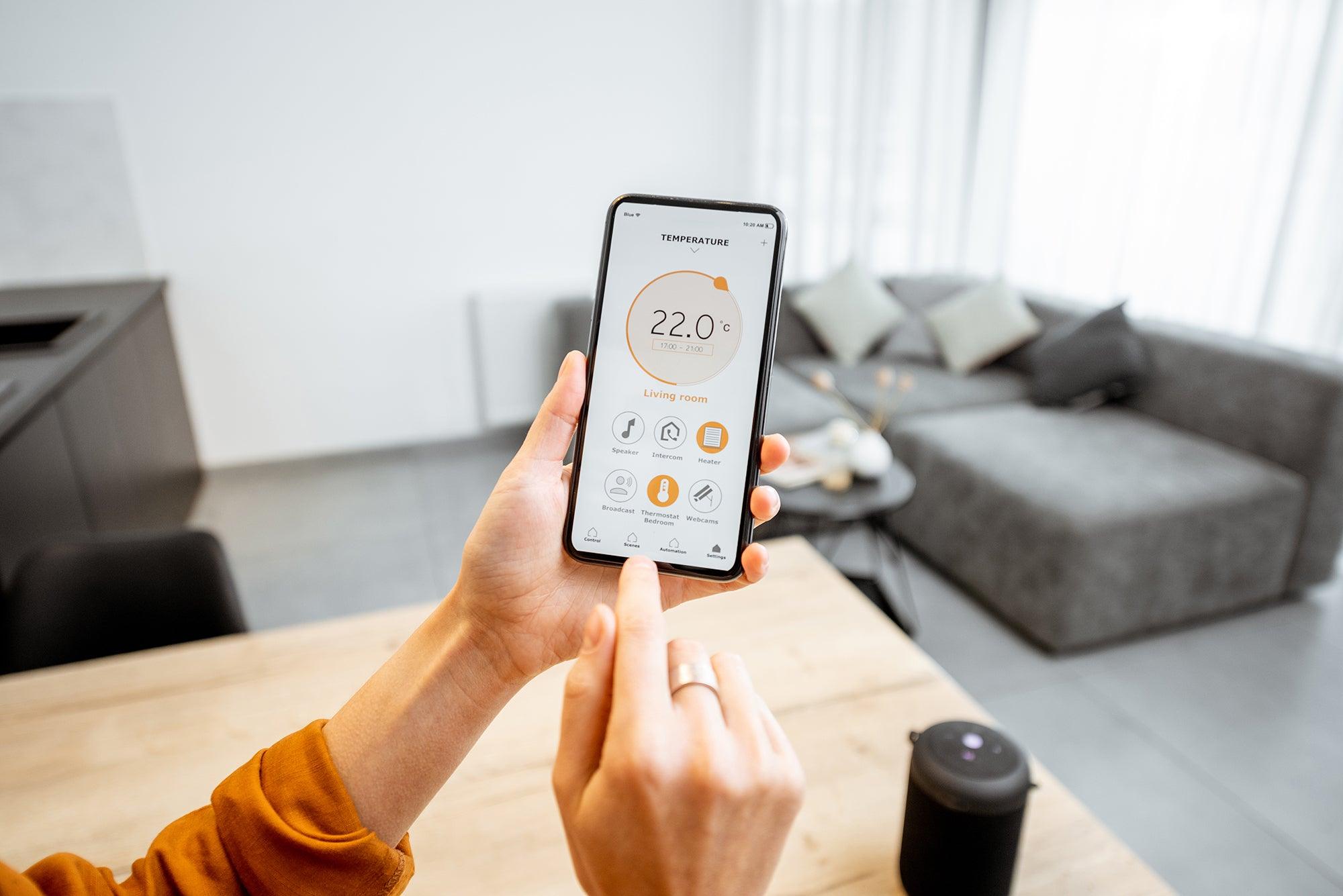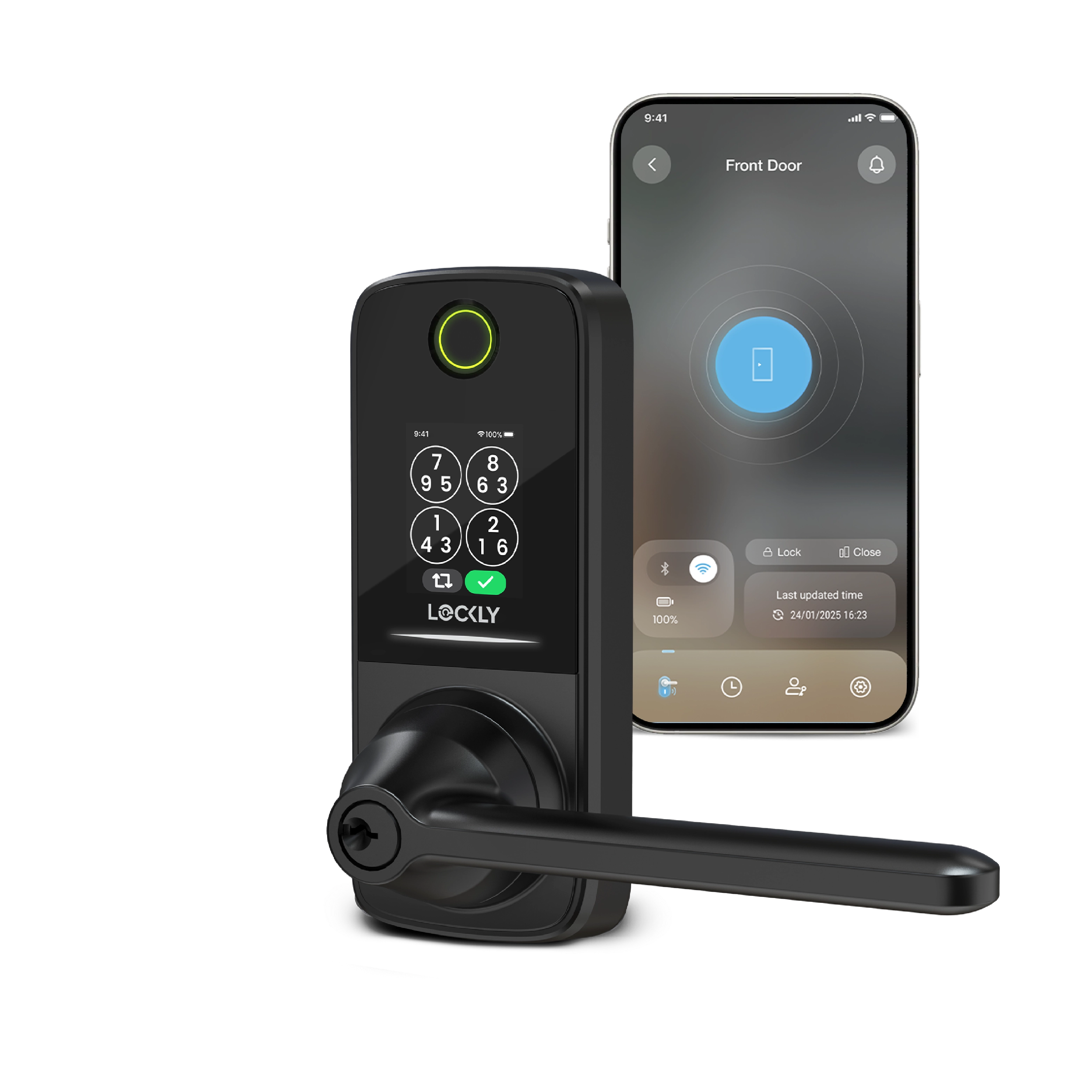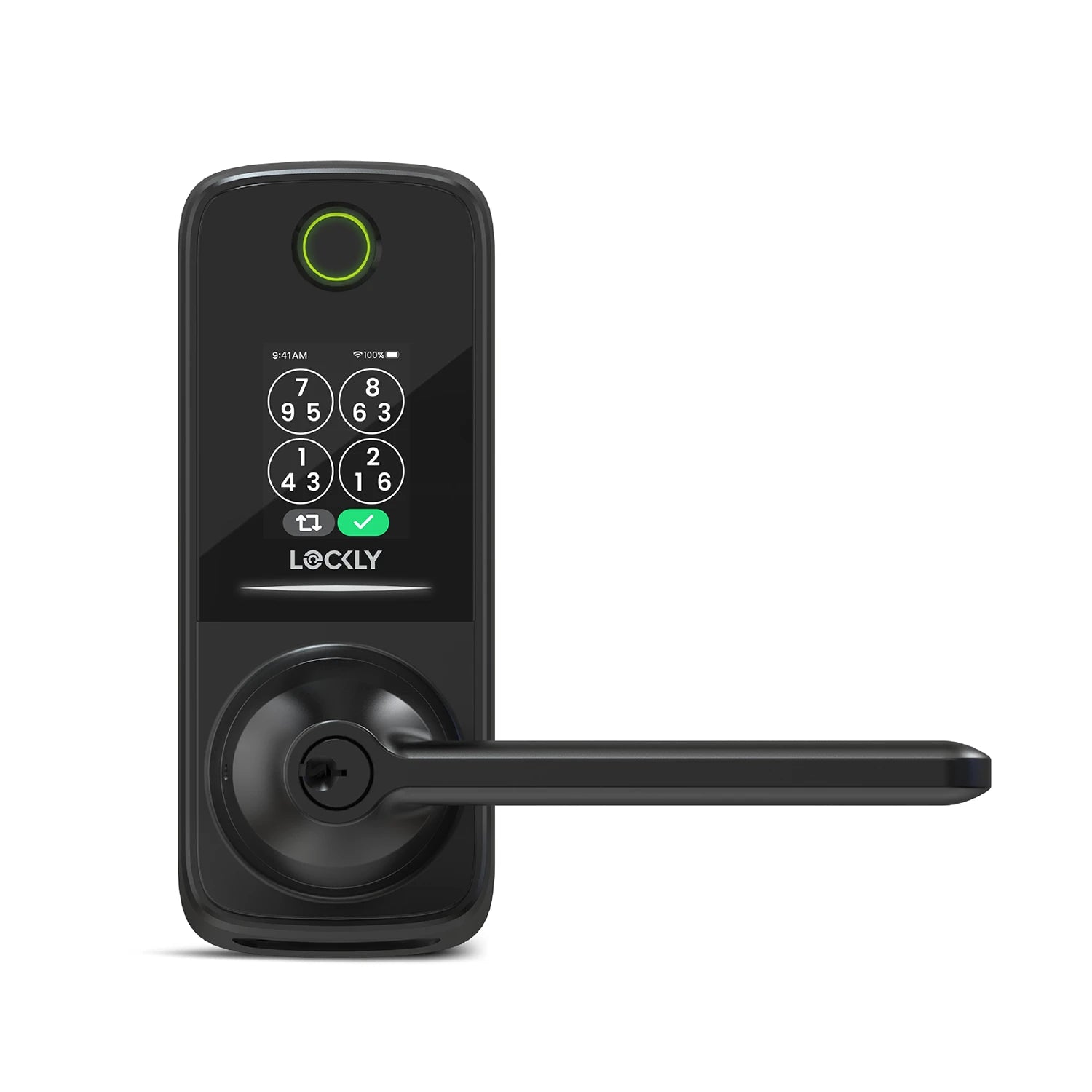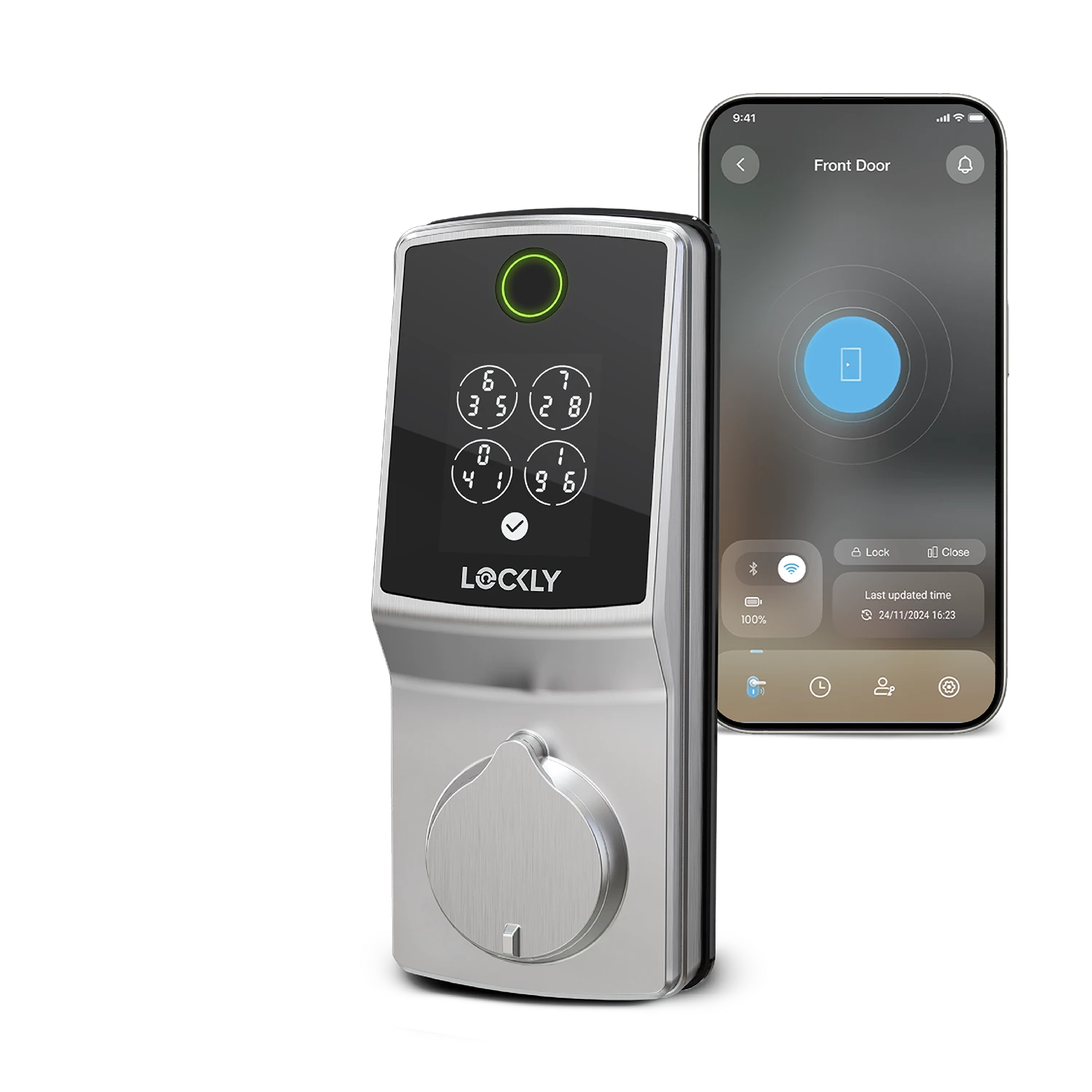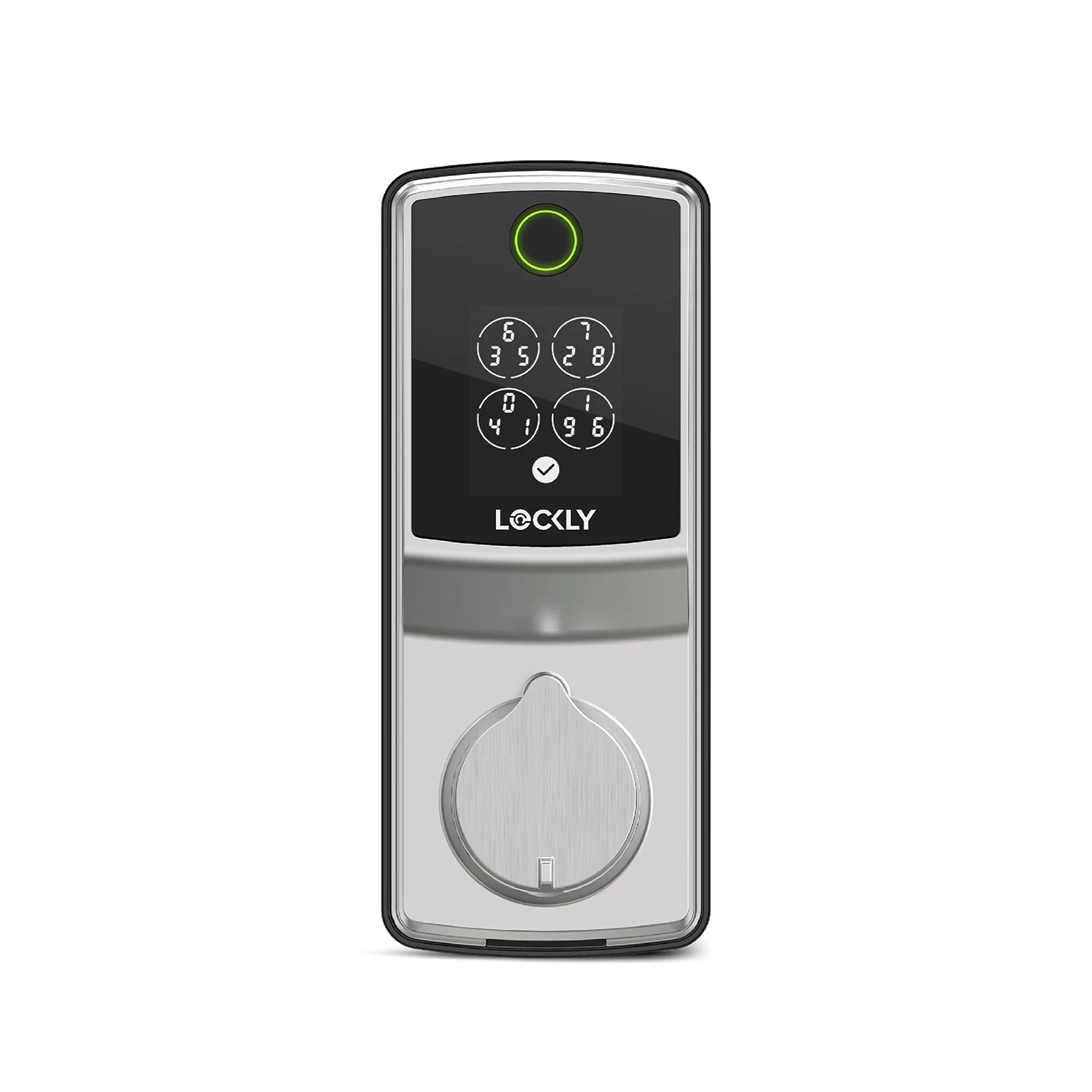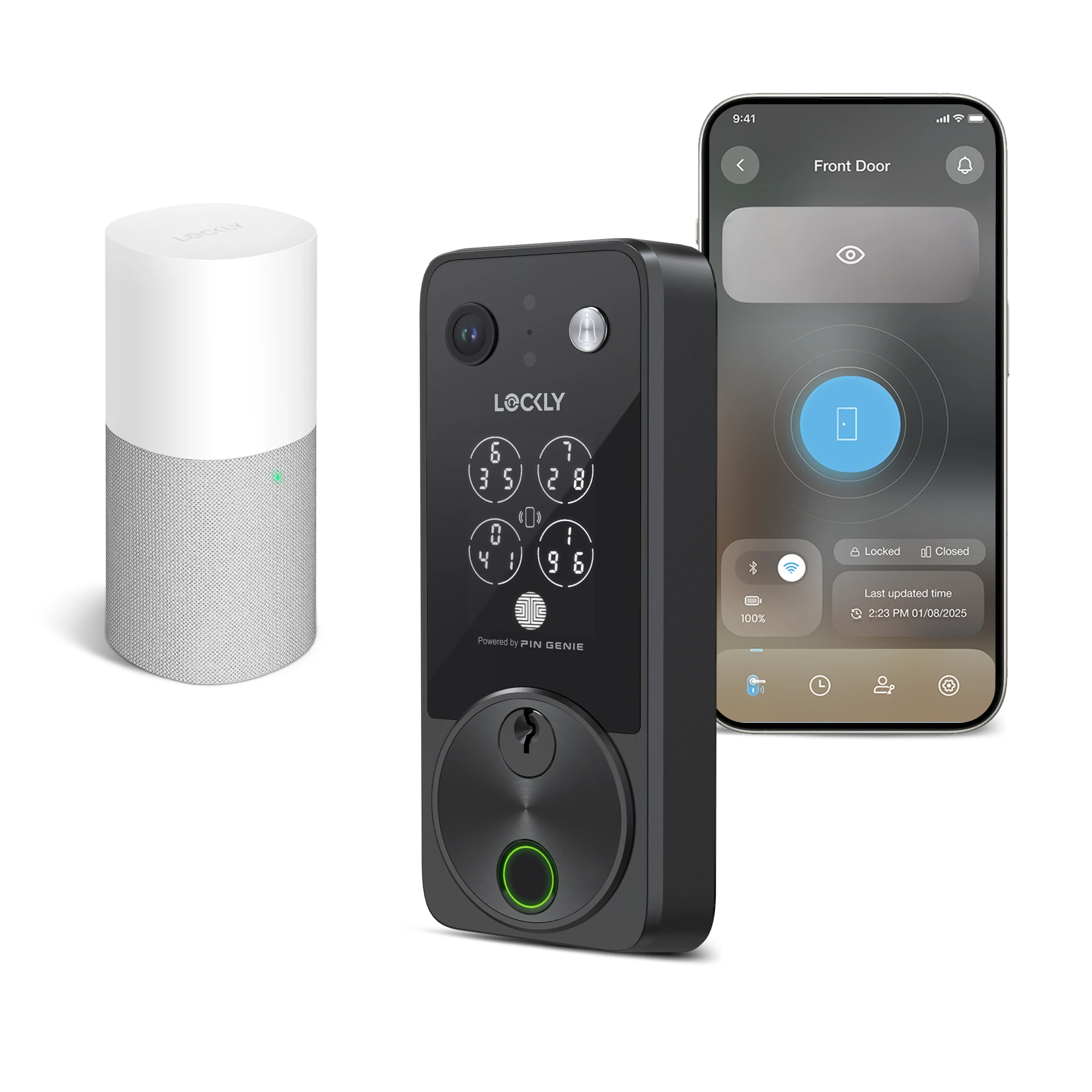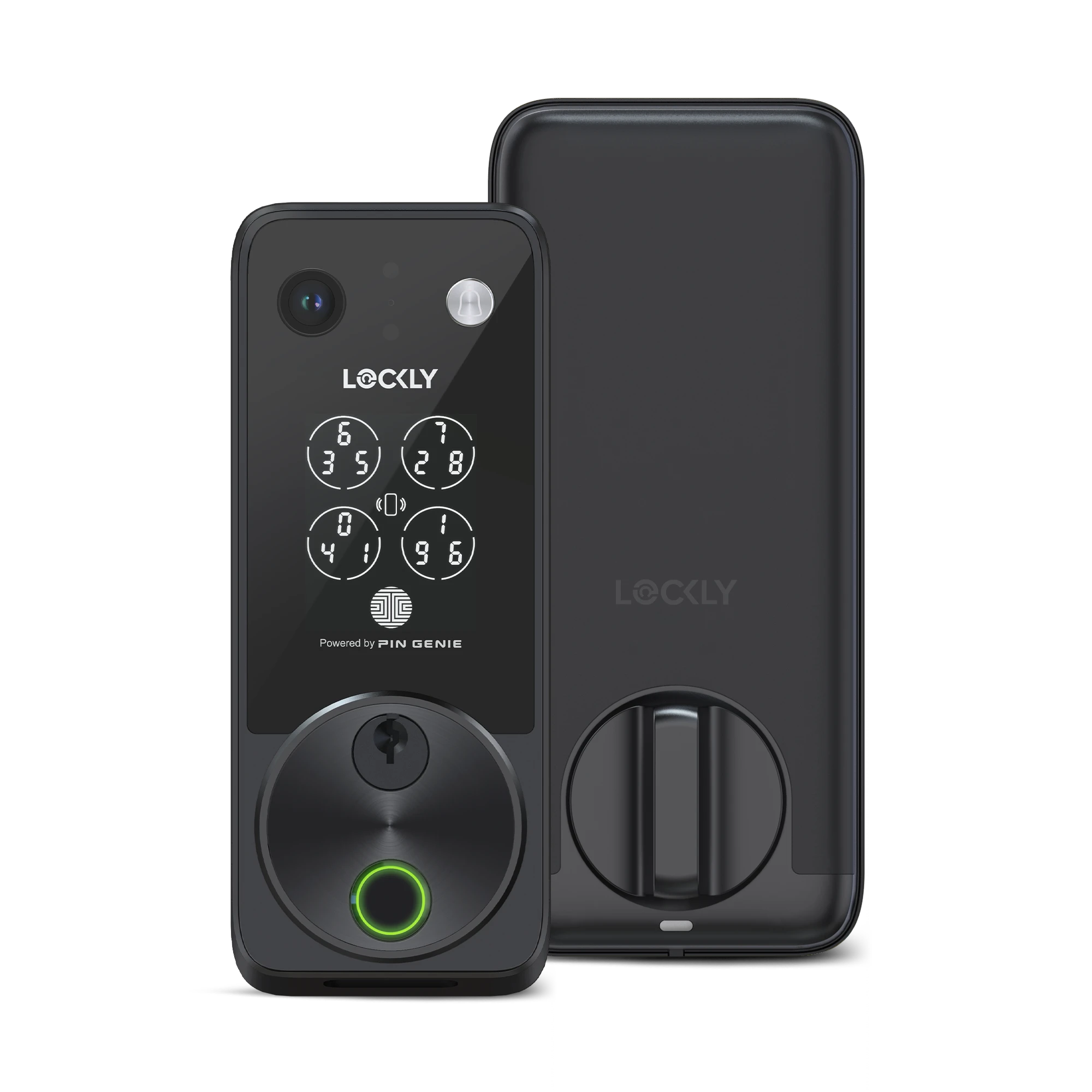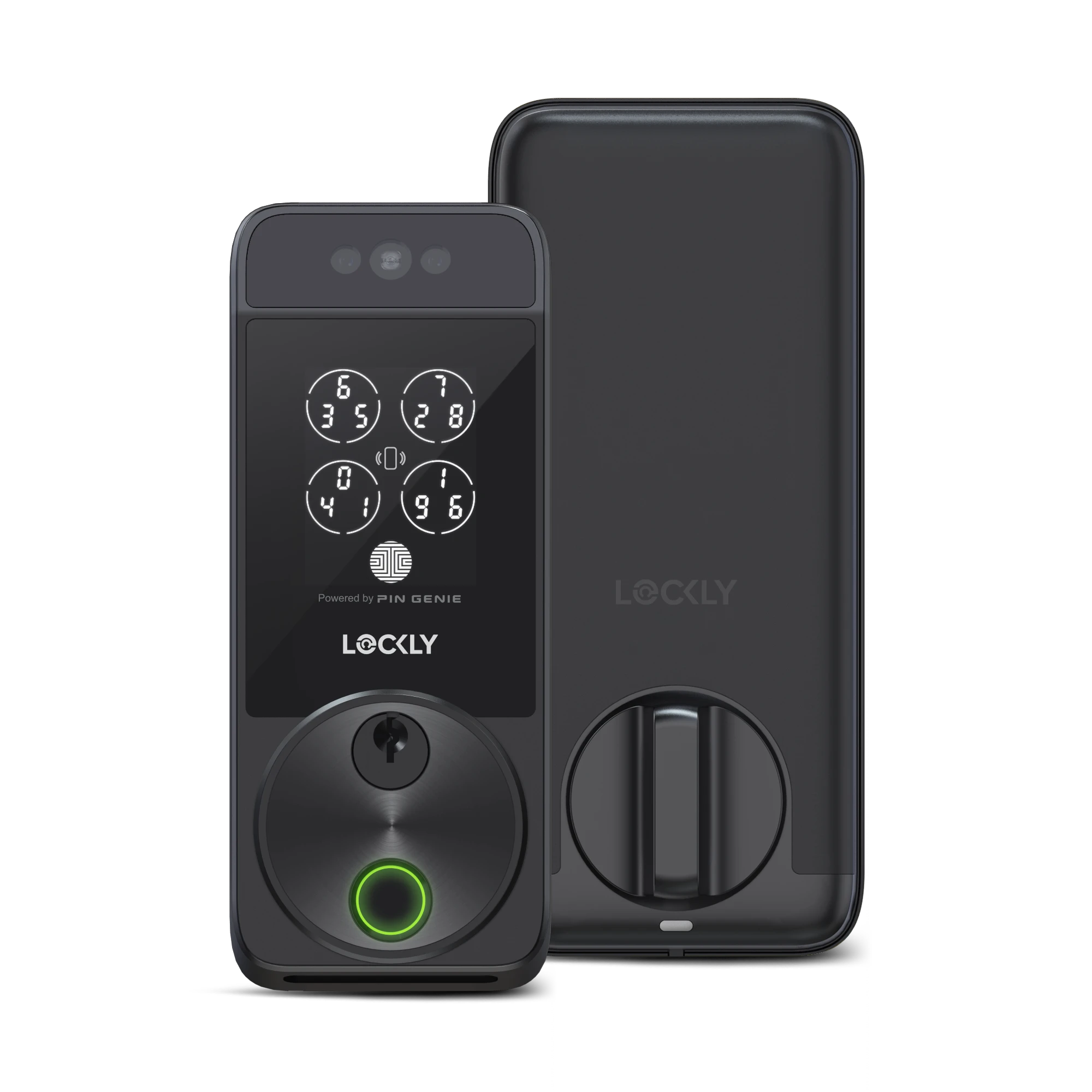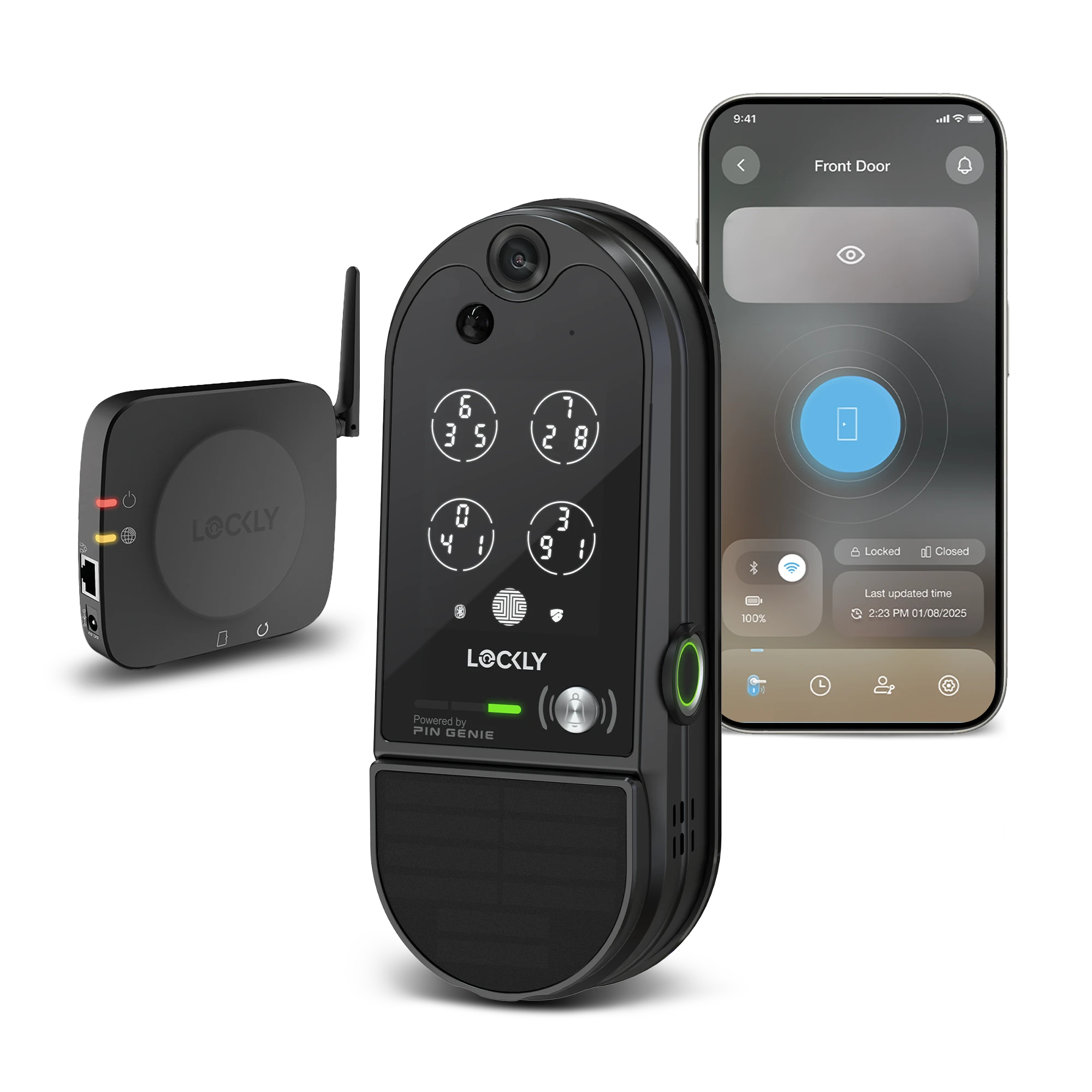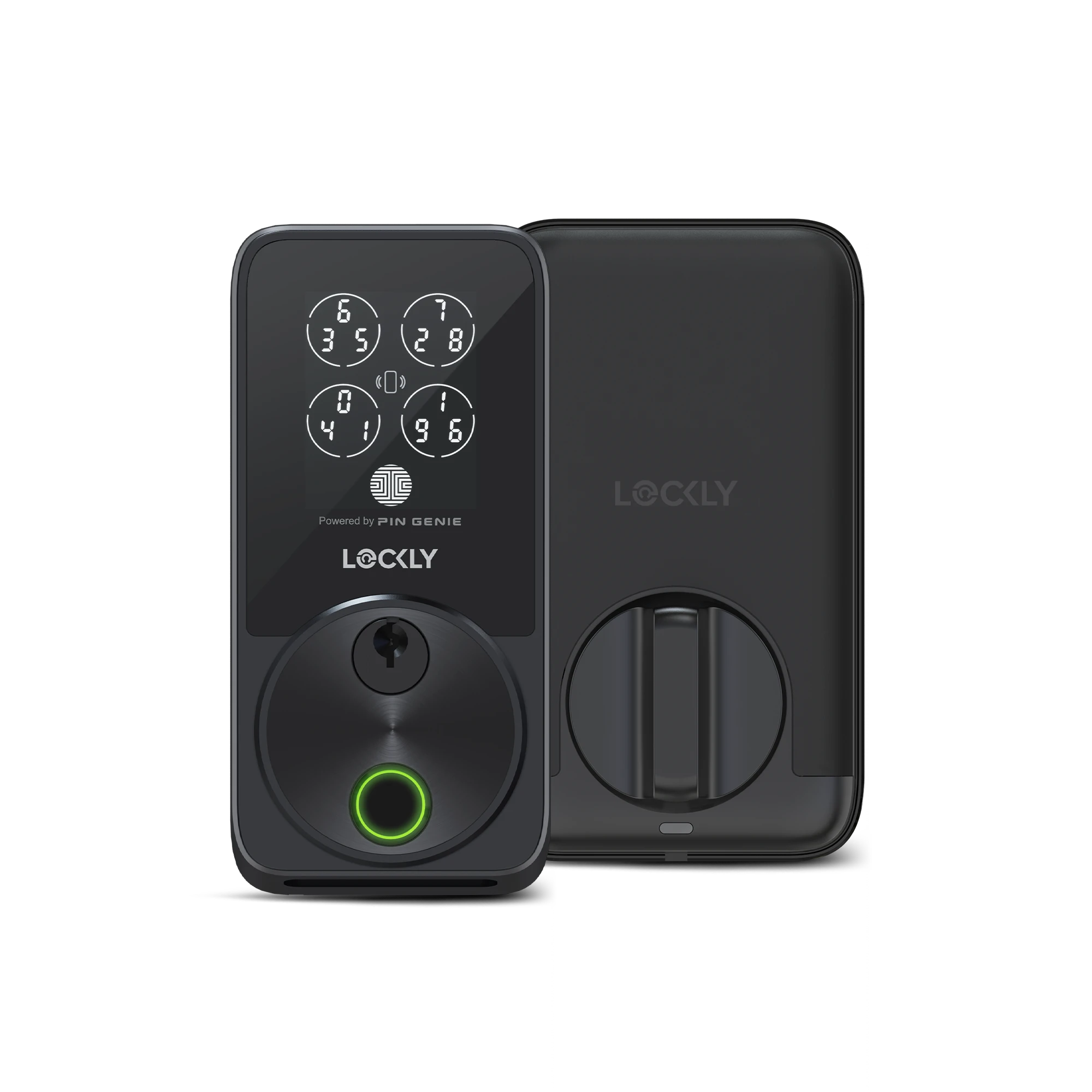Understanding Door Access Control
So, right up front, door access control is a type of control system — in this case, typically a type of digital or “smart” (meaning, internet-connected) control system — that helps bolster the security of entryways by ensuring that only authorized people are able to enter. Door access control ecnompasses a range of systems, from electronic door locks to biometric devices and beyond.
You can think of a lock-and-key system as the sort of original door access control system, while smart home security and digital door access control offer much greater security, flexibility and customization. In general, access control falls into two categories, based on how users interact with them:
- Contact: These are access control systems that — you guessed it — grant access after making some sort of contact (think card readers or fingerprint scanners)
- Contactless: These access control systems do not require physical contact to grant access (facial recognition is a good example here)
How Does Smart Lock Access Control Work?
Contemporary door access control systems work across single doors and multi-door formats, and rather than relying on old-school locks and keys they grant authorized persons entry via all sorts of convenient options, ranging from key cards to mobile apps. Let’s take a look at a sampling of those options.
Electronic Keypad
Keypads allow you to ditch those annoying, jangly and easily lost keys by enabling you to unlock your door with a code or PIN entered onto a keypad or touchscreen. Many smart electronic keypad options support multiple user codes and let you add or delete codes as you wish. While many keypad-equipped door access control systems also include various smart features, you can also find electronic keypads that aren’t connected to Wi-Fi or smart systems at all.
Both types may also come equipped with additional security features. Our patented PIN Genie tech, for instance, displays four buttons with three randomized numbers in each button. For each access attempt, PIN Genie randomly shuffles the display of the numbers so no single code sequence is ever replicated twice, offering additional protection against prying eyes.
Biometric Sensor
Biometric sensors are small devices that recognize specific, authorized people based on their physical attributes. So when your phone reads your fingerprint, looks at your face or listens to your voice to unlock, it’s using a biometric sensor. In the case of door access control systems, you’ll often find fingerprint readers that grant access to specific people by identifying their unique print, like the one you’ll find on the Lockly Flex Touch Fingerprint Deadbolt.
Not all fingerprint readers are built equally, however; Lockly’s lineup leverages 3D biometric technology that recognizes fingerprints in just 0.5 seconds, learns and improves response rates with each scan and can’t be fooled by 2D images or fake fingerprints like traditional print readers can.
Access Card
The access card basically replaces the old metal door key — which dates back to the 6th century B.C. — with a svelte, credit-card-like key for easy, wallet-sized carrying. Each access card is encoded to interact with a lock-mounted card reader to grant access. Cards can interface with the reader via insertion or by using near-field-technology that automatically senses the proximity of the card to unlock the door.
Smartphone App
Many door access control systems feature Bluetooth, Wi-Fi or other wireless network integration. These smart locks are typically paired with a primary wireless device, usually a smartphone with Bluetooth, Wi-Fi or other network connectivity, to unlock them (though in some cases, a proximity-based Bluetooth-enabled key fob or security token may be used). With a Bluetooth, Wi-Fi or network-connected lock, you’ll set up the system with a compatible app, like the Lockly app, upon installation and use that app to gain access to the door or grant others app-based access to the door.
The Lockly app allows you to create and share different kinds of access to your family, friends or guests:
Offline Access Code
One of Lockly’s unique features, the Offline Access Code (OAC) empowers you to grant guests temporary door access remotely, with no need for the guest to download an app or possess any kind of entry key device. OAC codes are special 4-to-12 digit keypad codes that work on a temporary basis, with expiries ranging from a single-use code to a code that’s good for 60 days.
eBadge
eBadges are a seamless, app-based way offered by Lockly to grant access to the others. Owners of Lockly smart locks can use the Lockly app to issue an eBadges with temporary revocable access for a specific period of time or a specific recurring time — like every Wednesday for instance, making it easy to grant access to the weekly babysitter, housekeeper or dog walker, just to name a few. Users must download and install the Lockly app to use the eBadges. This type of access control can be super useful for people running short-term rentals, or for those who need to conveniently give limited access to the others, pet sitters for example.
eKey
eKeys like the type Lockly offers is an alphanumeric code that is the password for any trusted person or guest to pair his/her smartphone with a Lockly smart lock. You can share an eKey to the others when you add a new access code or issue an eBadge in the Lockly app. After pairing, your guest will be able to use the app on his/her own smartphone to unlock your door (making it the perfect solution for Airbnb and short-term rental hosts).
The eKey for a Trusted User Access Code will grant a permanent access without an expiration date until you revoke it; while the access of an eKey for a Guest Access Code or an eBadge can be temporary or periodic, which means it will be valid only in the specific duration, on specific dates or in a specific recurring time frame. These eKeys are also revocable at any time.
Voice Control
Wi-Fi-enabled or network-connected smart locks enable you to use internet-connected apps not only to lock or unlock doors from anywhere but oftentimes to access and control additional features remotely, such as getting real-time alerts of your door status, or viewing real-time live streaming that work alongside your door access control system to offer even stronger smart security. Lockly’s network-connected or Wi-Fi enabled smart locks also allow you to integrate it with your smart home assistant to open/close the door as well as checking the door status remotely with Google Assistant or Amazon Alexa, making your life more easy and convenient.
Importance of Door Access Control
The importance of door access control can be summed up in two words: better security. But it’s so much more than that. With stronger, more personalized security, you equip yourself with more control over your home, ensuring that only the people that you trust have access to your door, and only when you want them to. Door access control helps keep burglars, trespassers, vandals and other unwanted visitors out, while letting lots more peace of mind in. And for a little icing on the cake, access control alone can up your property value by as much as 5%.
Door Access Control, for You
Outside of the all-important brass tacks of security and safety, door access control systems offer a great deal of convenience (welcome to that no-keychain life) and often come bundled with smart home security systems with plenty of additional features, like digital video cameras and motion sensors. Choice is good, but we understand that variety can be daunting. Need some help deciding which type of door access control is right for you, your home and your family? Visit Lockly today.
Dan Ketchum is a freelance writer and small business owner with 13 years of experience. He’s been fortunate enough to collaborate with publishers and brands such as Fortune, Toshiba, Samsung, The Seattle Times, The Motley Fool and more along the way.
Sources:
The New York Times - The Best Electronic Keypad Door Lock
Idex - What Is a Biometric Sensor?
Maglocks - Basic Components of a Door Access Control System?
City Security Magazine - Did You Know…A Brief History of Locks and Keys
YouTube - Lockly Smart Lock - eKey Access by Lockly Official
Access Professional Systems - Does Gate Automation Actually Increase a Home’s Property Value?

